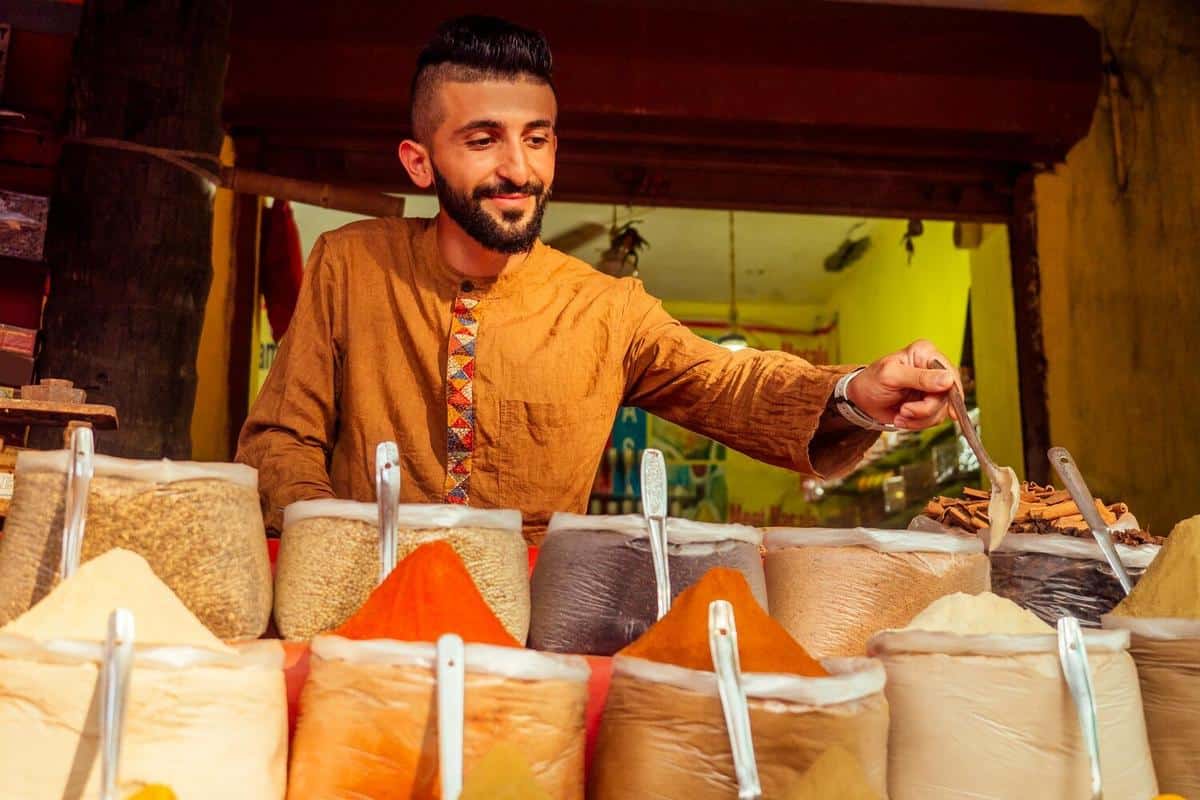
A Journey Through Middle Eastern Delicacies
The Middle East, a region rich in history and culture, offers a culinary landscape as diverse and vibrant as its people. With a blend of flavors that have been refined over centuries, Middle Eastern cuisine is a testament to the region’s rich heritage and the confluence of various cultures.
Exploring the Heart of Middle Eastern Cuisine
Middle Eastern cuisine is a tapestry woven with influences from the Mediterranean, North Africa, and beyond. Renowned for its use of aromatic spices, fresh herbs, and bold flavors, this cuisine has something to offer every palate. According to culinary expert Claudia Roden, Middle Eastern food is about ‘generosity and hospitality,’ qualities that are deeply embedded in its culinary traditions.
The Staples of Middle Eastern Delicacies
Staples like hummus, falafel, and tabbouleh have gained international recognition, but the region’s culinary offerings are immensely varied. A study by the World Food Program highlights that grains such as rice and bulgur are fundamental to many dishes, often paired with proteins like lamb, chicken, or fish.
| Dish | Main Ingredients | Region |
|---|---|---|
| Hummus | Chickpeas, tahini, lemon juice | Levant |
| Falafel | Chickpeas or fava beans | Egypt, Levant |
| Tabbouleh | Parsley, bulgur, tomatoes | Levant |
| Shawarma | Meat, pita, vegetables | Levant |
| Kebabs | Meat, spices | Turkey, Iran |
| Baba Ganoush | Eggplant, tahini | Levant |
| Dolma | Vine leaves, rice | Turkey, Greece |
| Mansaf | Lamb, rice, yogurt sauce | Jordan |
Personal Anecdotes and Cultural Insights
During my travels in Lebanon, I joined a local family for a traditional mezze meal. The table was a vibrant display of small dishes, each offering a burst of flavor. This experience taught me that Middle Eastern dining is not just about food; it’s about community and sharing.
To bring a touch of the Middle East to your kitchen, try adding a pinch of sumac to salads for a tangy kick or incorporate za’atar spice blend to grilled meats for an aromatic finish.
Actionable Tips for Exploring Middle Eastern Cuisine
- Visit local Middle Eastern restaurants to taste authentic flavors and support small businesses.
- Experiment with cooking Middle Eastern dishes at home using online recipes and tutorials.
- Join cooking classes, either locally or online, to learn from experts and enhance your culinary skills.
FAQs about Middle Eastern Cuisine
What are common spices used in Middle Eastern cooking?
Common spices include cumin, coriander, turmeric, and cinnamon, each adding depth and warmth to dishes.
Is Middle Eastern food healthy?
Yes, many Middle Eastern dishes are rich in vegetables, legumes, and lean proteins, making them nutritious and balanced.
How can I make authentic hummus at home?
Blend cooked chickpeas with tahini, lemon juice, garlic, and olive oil for a creamy, authentic dip.
Conclusion
Middle Eastern cuisine offers a rich tapestry of flavors that reflect the region’s cultural diversity and history. By exploring these dishes, whether in your kitchen or at a local eatery, you can enjoy a culinary adventure that is both rewarding and delicious. So, gather your ingredients, invite some friends, and let the flavors of the Middle East transport you to a world of culinary delight.


